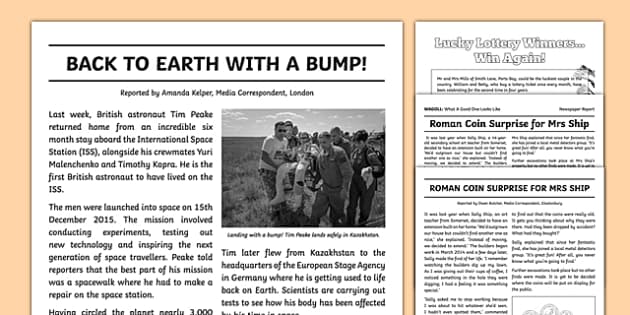All About News Articles
Table of ContentsThe smart Trick of News Articles That Nobody is DiscussingSee This Report about News ArticlesThe 20-Second Trick For News ArticlesAbout News ArticlesThe Only Guide for News Articles
Excellent understanding of different topics gives pupils an one-upmanship over their peers. Even though electronic and social media sites are easily available, we need to not fail to remember exactly how important it is to read the newspapers. Moms and dads need to attempt and instill the habit of checking out a paper as a daily regimen to continue the tradition of the adored print tool.Newspaper article likewise have at the very least one of the complying with crucial qualities relative to the designated target market: closeness, prominence, timeliness, human passion, strangeness, or effect. The related term journalese is occasionally utilized, generally pejoratively, to refer to news-style writing. Another is headlinese. Papers usually comply with an expository writing style.
Within these limits, news tales also aim to be extensive. Various other aspects are entailed, some stylistic and some acquired from the media kind. Among the bigger and a lot more respected papers, justness and equilibrium is a major consider offering info. Commentary is typically restricted to a different section, though each paper may have a different general slant.
Papers with an international audience, for instance, tend to utilize a much more formal design of creating. News Articles.; usual design guides include the and the US Information Style Publication.
News Articles Fundamentals Explained
As a policy, journalists will not utilize a long word when a short one will certainly do. Information authors attempt to prevent using the exact same word much more than once in a paragraph (sometimes called an "resemble" or "word mirror").
Nonetheless, headings often leave out the topic (e.g., "Leaps From Boat, Catches in Wheel") or verb (e.g., "Cat lady fortunate"). A subhead (likewise subhed, sub-headline, subheading, subtitle, deck or dek) can be either a subordinate title under the primary heading, or the heading of a subsection of the article. It is a heading that comes before the primary text, or a group of paragraphs of the major text.

Additional signboards of any of these types might show up later on in the post (especially on subsequent pages) to tempt additional analysis. Such signboards are additionally used as reminders to the write-up in various other areas of the publication or website, or as ads for the piece in various other magazine or sites. Regular structure with title, lead paragraph (recap in bold), various other paragraphs (details) and contact info.

Instance of a hard-lead paragraph NASA is proposing an additional room project. The spending plan requests approximately $10 billion for the task.
The NASA news came as the firm requested $10 billion of appropriations for the project. An "off-lead" reference is the 2nd crucial front page information of the day. The off-lead appears either in the top left edge, or straight below the lead on the. To "bury the lead" is to begin the post with history information or details of second relevance to the viewers, forcing them to learn more deeply into a short article than they need to need to in order to find the crucial factors.
Get This Report about News Articles
Usual use is that or 2 sentences each create their own paragraph. Reporters typically describe the organization or structure of a newspaper article as an inverted pyramid. The essential and most intriguing elements of a story are put at the beginning, with sustaining details following in order of reducing importance.
It permits individuals to discover a subject to only the depth that their inquisitiveness takes them, and without the imposition of details or nuances that they could think about unnecessary, yet still making that info available to much more interested viewers. The upside down pyramid framework also makes it possible for short articles to be trimmed to any type of approximate size during layout, to fit in the area readily available.
Some authors start their tales with the "1-2-3 lead", yet there are several kinds of lead readily available. This format usually starts with a "5 Ws" opening paragraph (as described over), complied with by an indirect quote that offers to support a major component of the very first paragraph, and after that a straight quote to sustain the indirect quote. [] A twist can refer to several points: The last tale current program; a "pleased" story to finish the show.
Longer write-ups, such as magazine cover posts and the pieces that lead the within areas of a paper, are known as. Feature tales differ from straight information in numerous means.
The Ultimate Guide To News Articles
The reporter commonly information communications with interview subjects, making the item extra individual. An attribute's very first paragraphs often relate an interesting moment or event, as in an "anecdotal lead". From the particulars of why not look here a person or episode, its view quickly broadens to abstract principles about the tale's topic. The area that signifies what an attribute is about is called the or signboard.

The Editor's Toolbox: A Recommendation Guide for Beginners and Professionals (2001) Allan M. Siegal click site and William G. Connolly. The New York Times Handbook of Style and Usage: The Authorities Design Guide Made Use Of by the Writers and Editors of the World's Most Reliable Paper (2002) M. L. Stein, Susan Paterno, and R.